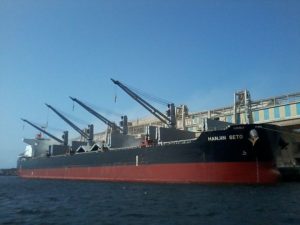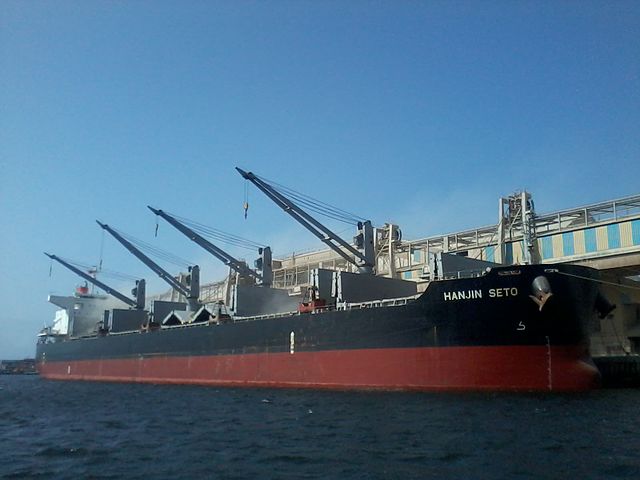 The passing of South Korean ocean shipping behemoth Hanjin is not an isolated case and, given the current situation in the industry, there is likely to be more Hanjins in the offing, a scenario that could spell trouble for free competition, according to a new analysis.
The passing of South Korean ocean shipping behemoth Hanjin is not an isolated case and, given the current situation in the industry, there is likely to be more Hanjins in the offing, a scenario that could spell trouble for free competition, according to a new analysis.
The OECD Insights says in a blog that the fading away of Hanjin is “not an accident,” but ensued from “market forces at play,” even as it warned that “it will happen again.”
Noting that “after months—even years—of pain and suffering,” the South Korean container shipping company Hanjin—the world’s seventh biggest container line with a fleet of 90 ships—finally sank and passed away, its demise marking the largest shipping bankruptcy in history.
It likened the event to a bereavement that requires making immediate arrangements for. For terminal operators and maritime service providers that were not paid for their services, “they have seized Hanjin ships in ports to have some sort of guarantee.” Competitors, too, are “circling around the deceased to pick up some of the ships that Hanjin leaves behind.”
While sluggish demand for container transport, declining trade due to the restructuring in China, and the overcapacity in container shipping that led to new lows in ocean freight rates are key factors, the report said the root cause of it all could be traced “in a corporate boardroom in Copenhagen in 2010.”
“Then, the world’s largest container shipping company, Maersk Line, decided to order a set of new container ships that were larger than the world had ever seen, able to carry 18,000 standard containers,” it said.
Putting more containers on a more fuel-efficient ship would save costs and thus give the company a better position in a very competitive market, particularly between Asia and Europe—the route on which the largest ships are deployed and which needs 10 to 11 ships from a carrier to operate a weekly container service.
Seeing that ship prices were low due to overcapacity in shipbuilding yards, Maersk Line launched the new mega-ships, called “Triple E” ships. These ultra-large box vessels not only provided economies of scale, energy efficiency, and environmental performance, they also provided a once-in-a-lifetime opportunity “for the market consolidation that big players hoped for.”
Soon, other carriers were ordering similar mega-ships and organizing themselves in alliances, agreeing to share slots on each other’s vessels to offer networks and connections that they would not be able to offer alone.
The Triple E strategy involuntarily resulted in stronger alliances in which more carriers were involved, said the report. These consortia were also used to share newly acquired mega-ships, so individual carriers would only need to buy a few of these, instead of having to shoulder a whole set of 10 ships.
Consequently, many carriers were able to rapidly catch up and also order mega-ships, many more than expected. The alliances became such powerful mechanisms that even the largest companies found themselves forced to find alliance partners.
“The combined mega-ship orders in a period of sluggish demand created a sensational amount of overcapacity: way more ships than were needed. This overcapacity resulted in lower freight rates, lower revenues and several years of losses, which we have not started to see the end of yet. Whoever has the longest breath and biggest pockets will survive; the others won’t and will suffer death by overcapacity, like Hanjin,” said the analysis.
“There will very likely be more Hanjins,” it further warned. “Hardly any container shipping line is making profit nowadays and the perspectives are bleak. Sputtering trade growth and gigantic ship overcapacity will continue to depress ocean freight rates. Banks, creditors and governments might well get impatient with some of the liners and cut life lines again.”
The problem, it said, is the possibility that “it will soon lead to a very small group of powerful carriers dominating an already concentrated market, enabling them to put a lot of pressure on clients and ports.”
It pointed out that such results are now starting to be seen—less choice, less service and fewer connections for shippers, the clients of shipping lines.
For ports, those who invested in becoming mega ship-ready “may find out that they placed their fate in the hands of a few big players who frequently change loyalties as fast as the wind.”
Photo: Farid mernissi





